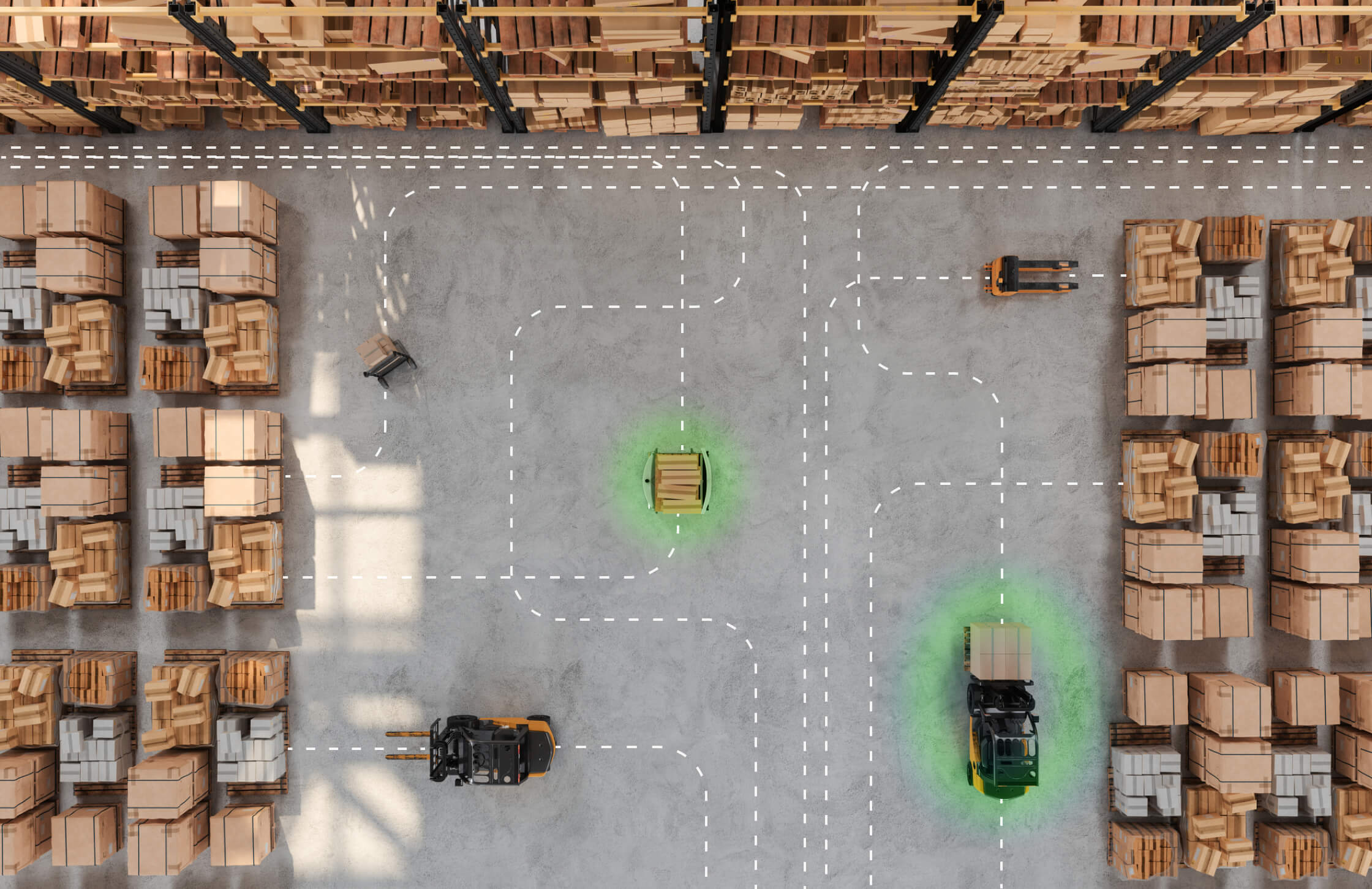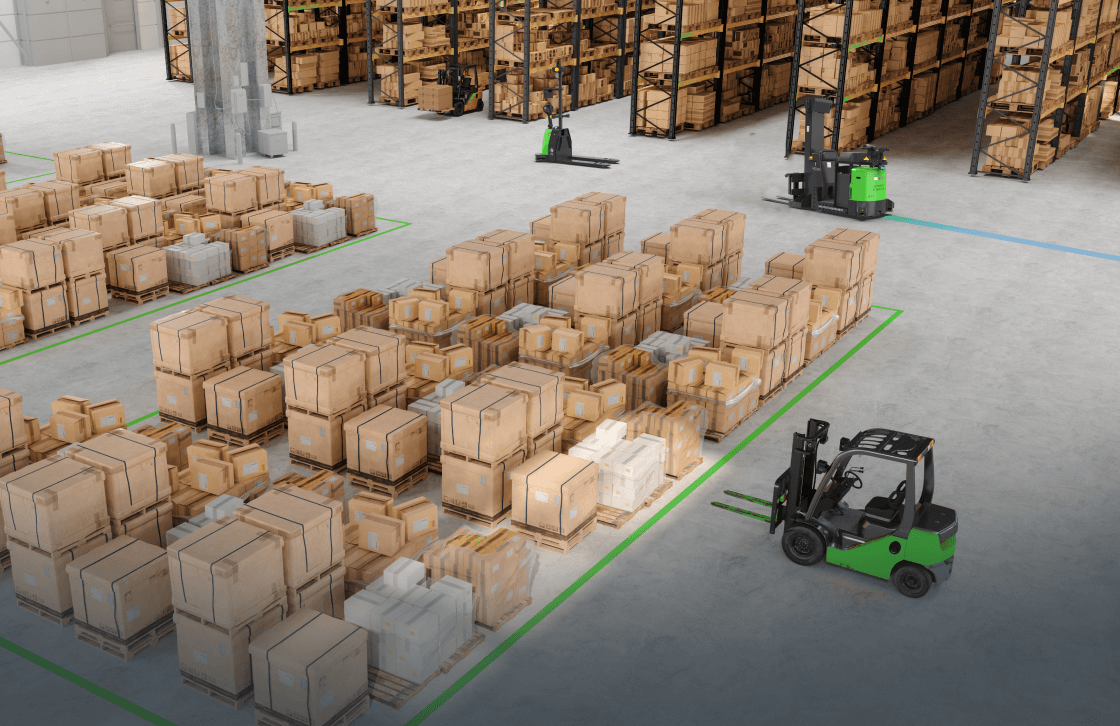As a warehouse CEO or executive, you understand the importance of streamlining operations via intralogistics automation to create an efficient distribution center. You’re always looking for ways to improve productivity and meet customer demand. Automation is one tool that can help you achieve those goals, but it may be unclear exactly how your intralogistics process can be improved by adding automated solutions. In this blog post, we’ll look at what intralogistics automation is, why it matters to warehouses like yours, and five steps you can take right now to get started with automation in your facility.
What is intralogistics automation?
Intralogistics automation refers to the use of automated systems and technologies within a warehouse or distribution center to improve efficiency, accuracy, and safety. These systems can include robotic picking and packing, automated storage and retrieval systems, conveyor systems, and warehouse management software.
Benefits of intralogistics automation
One of the main benefits of intralogistics automation is increased productivity. Automated systems can work faster and more accurately than human workers, which can lead to a significant increase in the amount of goods that can be processed in a given time period. Additionally, automated systems can also reduce the number of errors that occur during the picking and packing process, which can lead to a reduction in the number of returns or customer complaints.
Another benefit of intralogistics automation is improved safety. Automated systems can reduce the need for human workers to perform dangerous tasks, such as climbing ladders or operating heavy machinery. Additionally, the use of automated systems can also reduce the risk of injuries caused by repetitive motions, such as picking and packing.
Automated systems can also improve the accuracy of inventory tracking. Automated systems can help to ensure that the correct products are picked and packed, and that inventory levels are accurate. This can help to reduce the number of stockouts and overstocking, which can lead to cost savings.
Intralogistics automation can also help to reduce the environmental impact of warehouses and distribution centers. Automated systems can help to reduce the amount of energy required to operate a warehouse and can also help to reduce the amount of waste generated.
The need to reduce labor costs and improve efficiency has driven the rapid growth of intralogistics automation. Warehouses are experiencing high employee turnover rates, with millions of unfilled positions projected to continue into 2030. Automation technologies enable your existing employees to get more done and, at the same time, make their jobs less mundane, safer, and more attractive. And all that makes it easier to attract new employees.
Transporting pallets, trolleys, and other containers driverlessly from one location to another within a facility helps employees accomplish their job faster and easier. Instead of driving a forklift or a tugger from place to place – a rather uninteresting and low-value proposition – such tasks can be handled by an automated piece of MHE. Intralogistics automation makes the whole operation less labor-intensive and more efficient.
5 steps to get started
1. Evaluate your facility’s suitability for automation
Before jumping into automating your material handling equipment, assessing your facility’s readiness is essential. Intralogistics automation works best in multi-shift workplaces because the schedule leads to a faster return on investment. Facilities larger than 200,000 square feet will see a more rapid payback than smaller installations. Because the distances are longer in a larger plant, the time-savings of automated equipment are more significant. The optimal performance of automated forklifts, tuggers, and pallet jacks requires Wi-Fi and a Warehouse Management System.
2. Consider your material transportation workflows
Focus on workflows that have well-established automation practices. Case studies and success stories from similar industries are valuable resources and provide insight into the workflows that are easiest to automate and yield the most rapid results.
Here is a useful framework for considering your material flows. Placing your needs into these categories helps to narrow down the type of equipment you need.
Floor to floor: The automated material handling equipment picks up its load from the floor, and delivers it to back onto the floor.
Floor to conveyor: The transported material starts out on the floor and is delivered to a conveyor at the destination.
Conveyor to conveyor: An example would be automated trucks delivering components from an automated storage and retrieval system to the input of a production process.
Floor to rack: For example, incoming goods are picked up by automated equipment and brought to a storage location. For supplying production, the intralogistics automation equipment can go from rack to floor, taking product from the rack and putting onto a tugger, for instance.
Conveyor to rack: An example would be taking outgoing product from a conveyor and bringing it to an interim storage rack.
3. Reach out to vendors who have relevant experience
Intralogistics automation has many moving parts, and it makes sense to take advantage of other people’s knowledge and experience in this area. Look for vendors that have the specific know-how to help an organization like yours – with a proven track record of quantifiable results.
4. Identify the best use cases
Don’t try to solve your toughest problems first. Instead, look for applications that represent easy gains and that are scalable. Start with an intralogistics solution in one location and let it prove itself. With the concept thus demonstrated, you can easily implement it in other locations and reap large rewards. Vendors can help to determine areas that represent easy successes. They can also assist with calculating your return on investment.
5. Start educating your employees
Everyone has heard scare stories about how robots will steal millions of people’s jobs. These narratives are not supported by the data. Similarly frightening tales were popular as computers began entering the workforce in a big way in the 1970s. The research firm McKinzie examined the record and found that while 3.5 million jobs were destroyed by computers from the 1950s to 2017 (when the study was done), over 19 million new jobs were created by the computing industry over that same time period.
History has shown repeatedly: technology creates far more jobs than it displaces.
Other studies show companies that invest in robotic automation grow faster than companies that don’t. And faster-growing companies hire more people than those with slower growth!
It’s never too early to start sharing this kind of information with your people. No doubt the kind of work they do will change – and the tasks will be more interesting, rewarding, and safer.
Implementing automation for your business
Automation is quickly becoming a mainstay in warehouses, factories, and other intralogistics facilities. If you’re ready to make the jump into automation but don’t know how to begin, consider the points covered in this post. Ready to take the next step? Launch a conversation with a knowledgeable and experienced Vecna representative to help you on your intralogistics automation adventure.
If you’re ready to get started with an initial assessment, contact us to set up an appointment with a Vecna Robotics automation expert.





